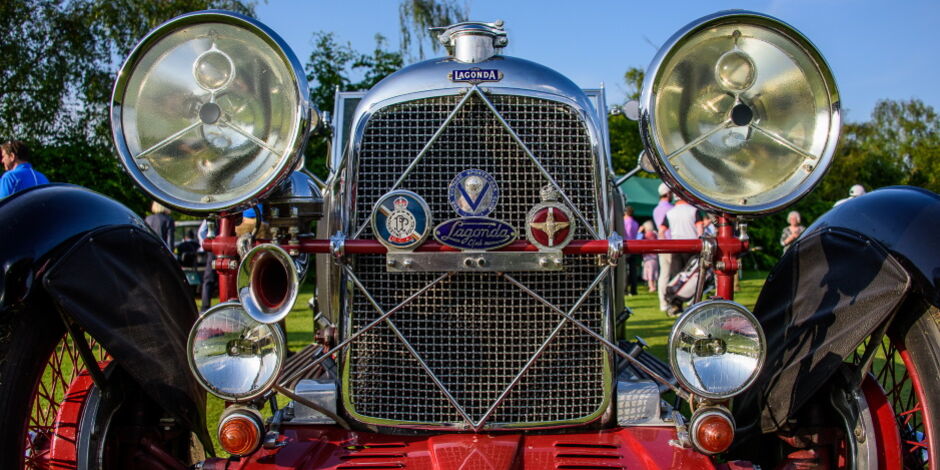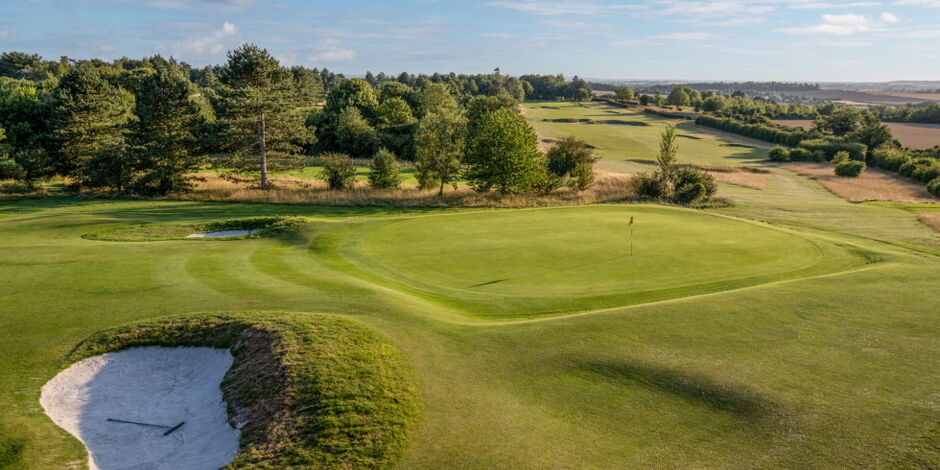History
Gonville and Caius College first purchased the land adjacent to the Gog Magog Hills for use as a golf course, “primarily for the use of senior members of the University”, in 1896. Nine holes were laid out in 1899 and, in 1901, a further nine holes were laid out and the Gog Magog Golf Club was formally established.
The initial course design was created by a local professional golfer, W Duncan, and subsequent changes were made by members' committees, in conjunction with the Head Greenkeepers, with Willie Park Junior, James Braid and, most recently, with Martin Hawtree, thus bringing the Old Course to its present state.
Messrs Hawtree & Son were also responsible for the design of the Wandlebury Course. Construction on this started on 1st June 1995 and, after three phases of development, the completed course was brought into play on the 6th June 1999.
Gog Magog Giants
The Club takes its name from the Gog Magog Hills along which the courses lie. Some say that Gog Magog was the name of a legendary giant whose lair was in Wandlebury Ring, abutting the 6th green and the 7th tee, but the name is certainly not specific to the locality. It occurs in the Bible.
In the Book of Revelations, Gog and Magog are referred to as representing the heathen, though in Ezekiel there is just one of them, Gog, and Magog is the name of his territory.
The twelfth century romantic "historian", Geoffrey of Monmouth, tells how the Giant Gogmagog of Albion was overthrown by one Corineus, who had come with Brute, or Brutus, from Troy to people this island, a somewhat fanciful ancestry for the British people. This doubt as to whether there was one giant or two, was wisely straddled by the founders of the Club, who just used the form Gog Magog equally without a hyphen to suggest there was one of them and without an "and" to suggest there were two. What is certain is that the name was not used before the sixteenth century, and the bestowal of the name might well be due to nothing more subtle than the hills looked like slumbering giants - Gog and Magog were familiar giant names.
The giants Gog and Magog, the legendary guardians of London, seem to have got their names no earlier. Their effigies in the Guildhall were burned in the Great Fire of 1666 and their replacements (the ones depicted in the Club lounge) were destroyed in a bomb raid during World War II. A third pair now stands in the London Guildhall and there is a clock with these figures in Melbourne, Australia, with an inscription that refers both to the London Guildhall and the Cambridge hills.
Gonville & Caius
We are proud of our history and our association with the College of Gonville & Caius. Find out more about Gonville & Caius.
The College was founded in 1348 by Edmund Gonville, Rector of Terrington. In 1353, his executor, William Bateman, Bishop of Norwich, consolidated Gonville's foundation, providing endowments and statutes and establishing the College on its current site in Trinity Street. The original community of Gonville Hall, consisting of a Master, Fellows and a small number of other students, gradually acquired endowments to support itself, and buildings to house its work. The College's buildings, including a chapel, a hall and a library, as well as accommodation for members of the College, reflected its functions as a place for a common life of study and prayer.









